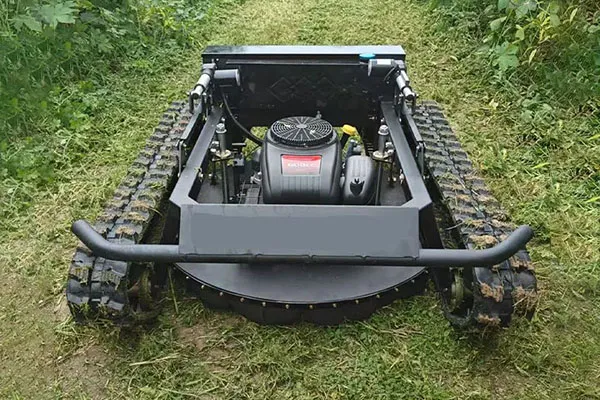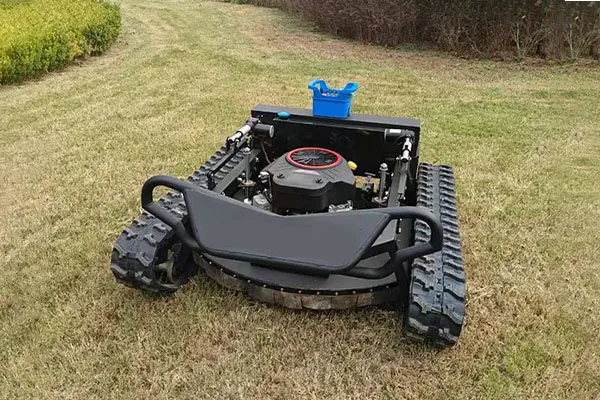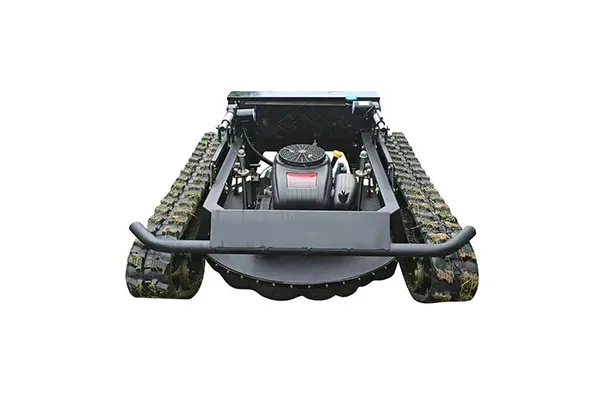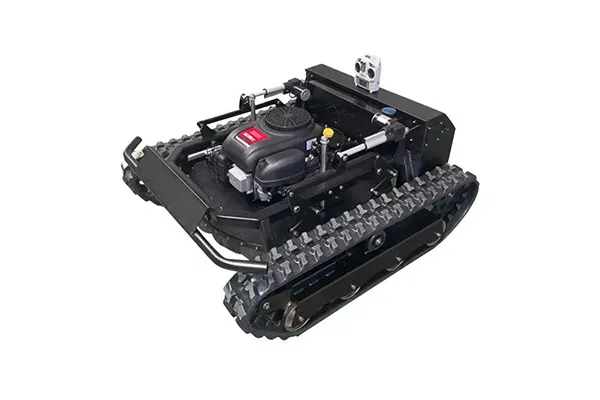Avoid your inquiry is delay response, please enter your WhatsApp/Skype along with the message, so we can contact you at the very first time.
We will reply you within 24 hours. If for urgent case, please add WhatsApp/WeChat: +8613791936882 ,. Or call +86-18678911083 directly.
Are you thinking about using a crawler robot lawn mower? You might wonder if these machines really live up to the hype.
Crawler robot lawn mowers are becoming more popular for their convenience. But, do they actually work well in maintaining a lawn? Let’s explore how they perform.

Crawler Robot Lawn Mower
Crawler robot lawn mowers promise a lot—effortless lawn care, reduced energy, and time savings. But do they actually deliver on these promises? Let’s take a closer look at some common questions.
You may be curious whether these robot mowers consume a lot of power. After all, efficiency is key to their appeal.
Crawler robot mowers are designed for energy efficiency. They don’t consume a lot of electricity, especially compared to traditional mowers, which use more power and fuel.
When we compare crawler robot mowers with traditional gas-powered mowers, the difference in electricity usage is substantial. Most robot mowers operate on rechargeable batteries, which need to be charged after every use. On average, a robot lawn mower might consume anywhere from 30 to 50 watts per hour of operation, depending on its model and features. In contrast, gas-powered mowers typically consume more energy, and their operation produces emissions, which is a downside for the environment.
Robot mowers generally take longer to mow the same area as a traditional mower, but since they run on battery power, they end up using much less electricity over time. This makes them an energy-efficient choice for homeowners who want to reduce their carbon footprint and electricity bills. Plus, many modern models have a return-to-base feature, where they return to their charging stations automatically, ensuring that they only use power when they need it. This system also helps in minimizing electricity wastage.
| Feature | Crawler Robot Mowers | Traditional Gas Mowers |
|---|---|---|
| Power Source | Battery (Low Consumption) | Gasoline (High Consumption) |
| Energy Efficiency | High | Low |
| Emissions | Zero | High |
| Charging Time | 1-2 Hours | N/A |
| Cost of Operation (per year) | Low | High |
As the seasons change, the challenge of dealing with fallen leaves can make lawn care tricky. So, can robot mowers handle them?
Yes, robot mowers can manage light leaf coverage. However, when there’s a heavy layer of leaves, you might need to assist the mower or opt for additional cleaning methods.

Crawler Robot Lawn Mower
Robot mowers are equipped with rotating blades that can chop and mulch leaves along with grass, making them a convenient option for maintaining lawns in autumn. However, their ability to deal with fallen leaves depends largely on the amount and type of leaves on the ground. Light leaf coverage won’t pose much of a problem, and the mower can typically cut through these leaves as it would with grass.
On the other hand, if there’s a thick layer of leaves or wet, matted leaves, the mower may struggle. The leaves may clog the blades or prevent the mower from properly cutting the grass beneath. In such cases, you might need to rake the leaves first or let the robot mower work in small sections.
It’s also worth noting that some high-end models come with specialized features for better leaf handling. For instance, advanced mowers may feature sensors or stronger blades to help them deal with leaves more effectively. However, even the best robot mowers may not be perfect for handling all types of leaves, especially if they’re wet and heavy.
| Leaf Type | Mower Performance |
|---|---|
| Light Leaves | Excellent |
| Wet Leaves | Moderate |
| Thick, Dense Leaves | Poor to Moderate |
While these mowers are quite efficient, they are not without their drawbacks. Let’s explore what could be holding them back.
Crawler robot mowers have some limitations, such as their inability to deal with uneven terrain and their relatively high initial cost.

Crawler Robot Lawn Mower
The main disadvantages of crawler robot lawn mowers include their initial cost and performance limitations on uneven terrain1. First, the price of these machines can be quite high, especially when compared to traditional mowers. The cost of advanced models2, which include GPS tracking, sensors, and robust features, can be out of reach for some homeowners. This may make the investment less appealing for people with smaller lawns or limited budgets.
Another issue is that robot mowers are not always equipped to handle rough or uneven terrain. They work best on flat, smooth surfaces. If your lawn has significant slopes or rough patches, the robot might struggle to navigate these areas. Some models may also get stuck in certain conditions, such as wet grass or large piles of leaves. These issues could require more frequent interventions by the user, reducing the mower’s hands-off appeal.
Moreover, while robot mowers are good at maintaining the lawn’s appearance, they don’t provide the same clean, pristine cut as a professional mower, especially on tougher terrains.
| Disadvantage | Impact |
|---|---|
| High Initial Cost | Expensive |
| Uneven Terrain | Poor Performance |
| Limited Cutting Power3 | May Not Cut Very Long Grass |
| Battery Life | Needs Frequent Charging |
| Regular Maintenance | Occasional Troubleshooting |
If you’re used to bagging grass clippings, you may be wondering what happens with the clippings when using a robot mower.
Robot mowers typically mulch the clippings into tiny pieces that fall back onto the lawn, acting as a natural fertilizer.

Crawler Robot Lawn Mower
One of the benefits of robot mowers is their mulching feature4. Instead of collecting and bagging the grass clippings, these mowers cut them into tiny pieces. The small clippings are left on the lawn, where they quickly decompose and return valuable nutrients to the soil. This process can help fertilize your lawn naturally, reducing the need for additional fertilizers and keeping the lawn healthy.
However, if you prefer to collect clippings or your lawn is prone to excess clippings that can clog up the grass, some models offer a grass collection system. These mowers can be fitted with a bin or bag to collect the cut grass, making them more similar to traditional mowers in this aspect. But keep in mind that the mulching process is a key selling point for many robot mower owners, as it eliminates the need for additional cleanup after mowing.
In cases where the clippings accumulate too much (especially during a growth spurt), the mower might need to be set to run more frequently, or you may have to manually rake or remove clippings. This is something to consider depending on your lawn care preferences.
| Clipping Management | Robot Mower Feature |
|---|---|
| Mulching | Standard |
| Collection | Optional (with some models) |
| Natural Fertilizer | Yes |
| Frequent Collection | May Require Manual Help |
Crawler robot lawn mowers are a game-changer in lawn care, but like any technology, they come with their pros and cons. It’s important to weigh the benefits with the limitations before making a decision.